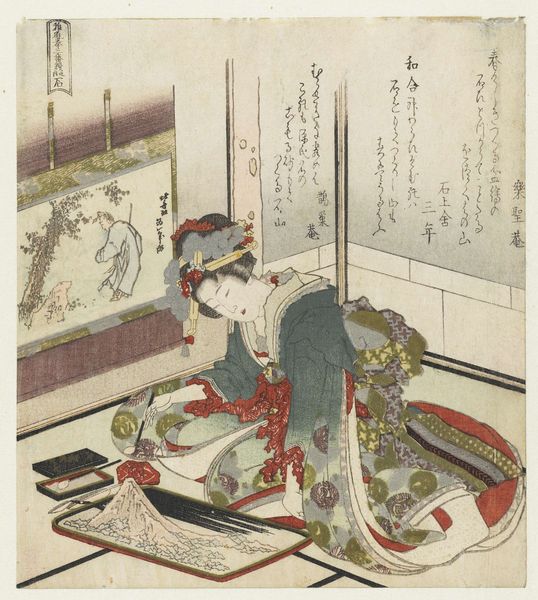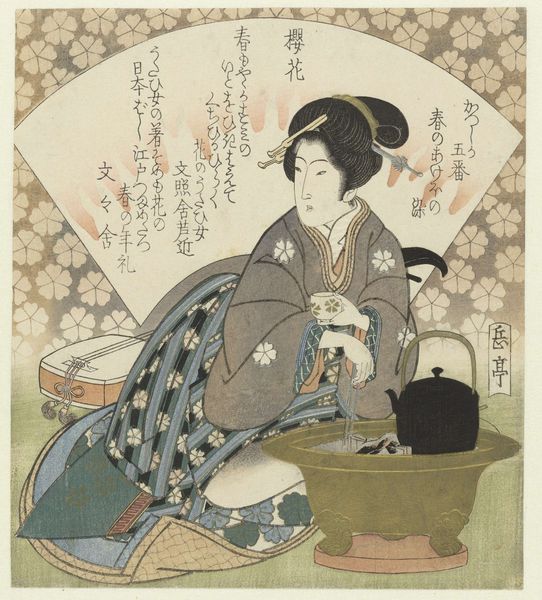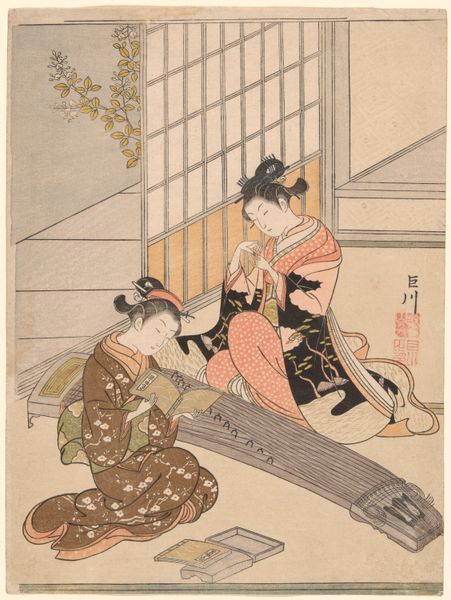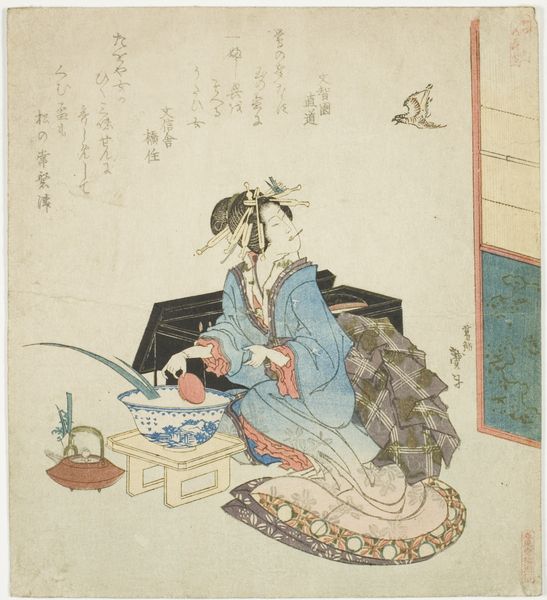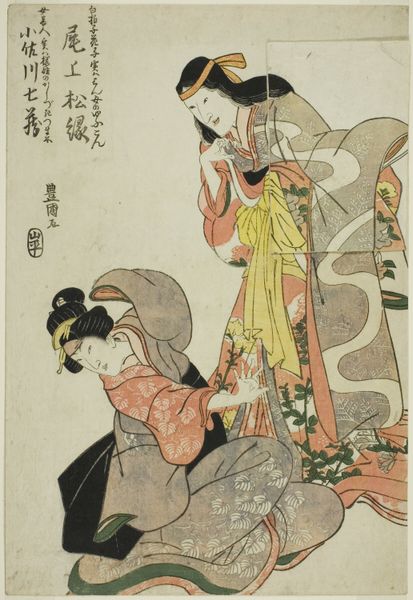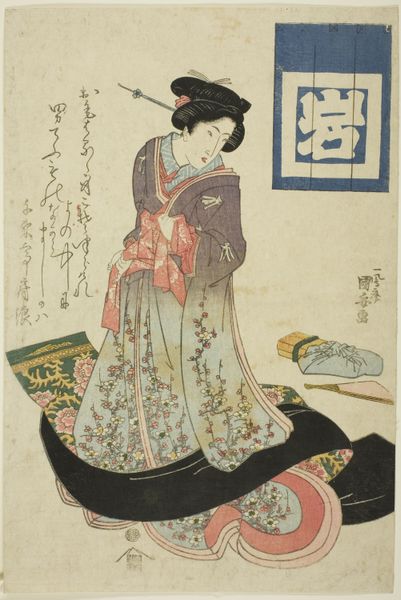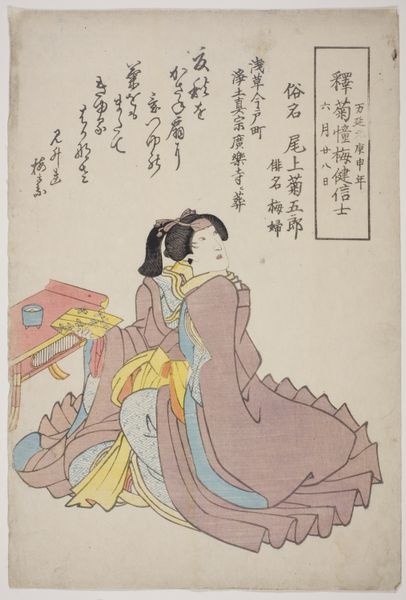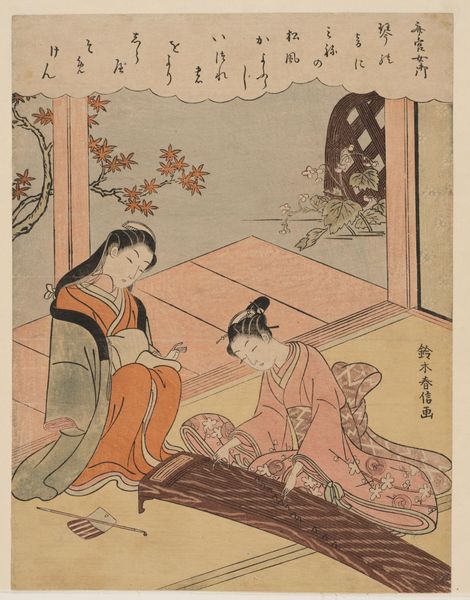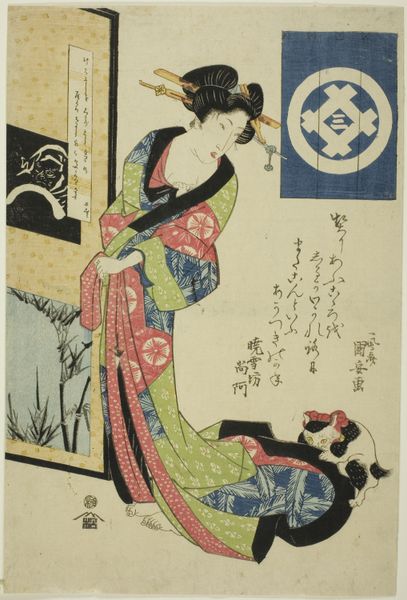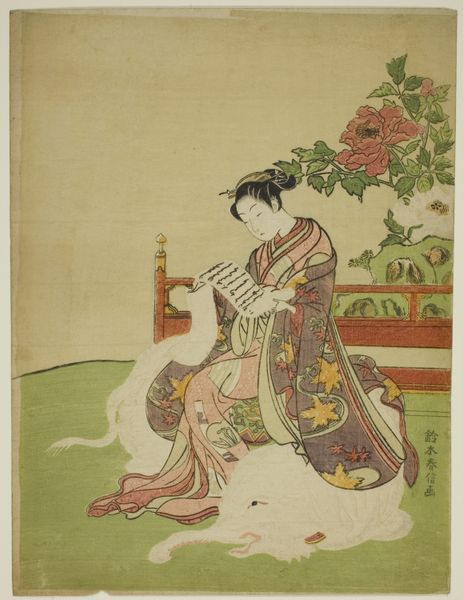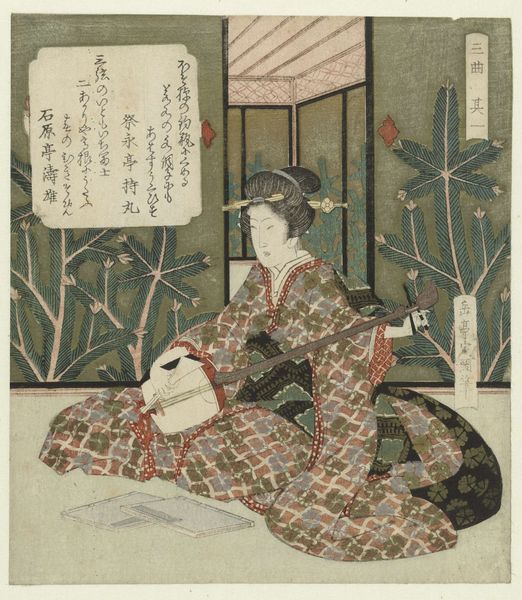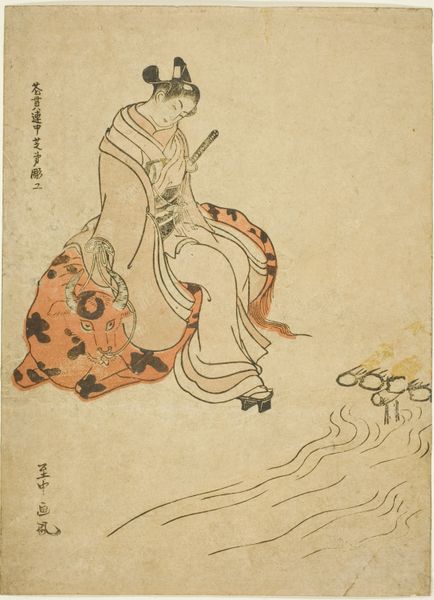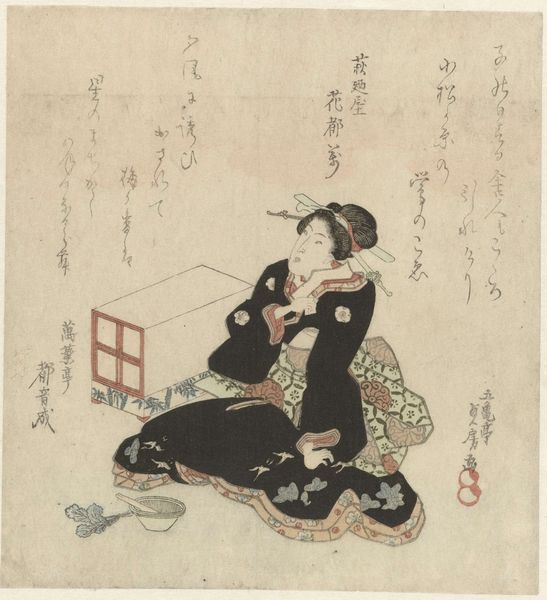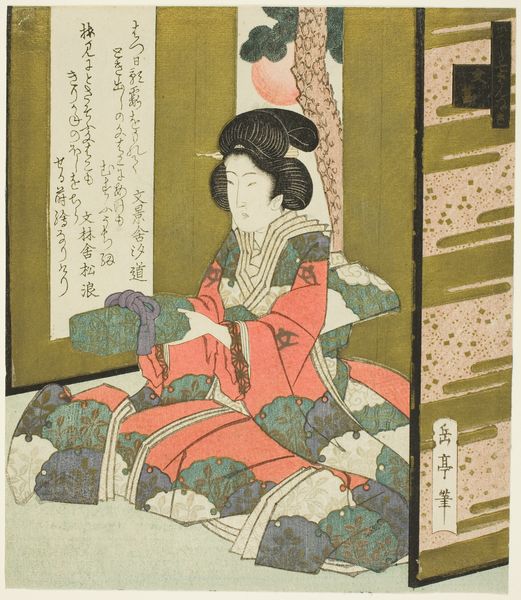
print, woodblock-print
#
portrait
#
narrative-art
# print
#
asian-art
#
ukiyo-e
#
woodblock-print
Copyright: Public Domain
Curator: Let’s take a look at "Memorial Portrait of the Actor Bando Shuka I," a woodblock print created in 1855. Editor: It's so evocative. The subdued colors create this melancholic mood—almost like witnessing a very private, sad moment frozen in time. What do you make of the composition? Curator: I see a fascinating confluence of traditions and sentiments surrounding death and remembrance in the 19th century. Ukiyo-e prints, often celebrating actors' likenesses, were recontextualized as memorial art, navigating grief through familiar aesthetics. Note how the woman is contemplating the body, which is itself partly obscured. Editor: Obscured, yes, and the geometric screen in the foreground somehow amplifies the intimacy and distance at the same time, which is… tragic. Also, is that a poem in the corner? Curator: Yes, text and image intertwine within Ukiyo-e traditions. This print, now housed at the Art Institute of Chicago, tells a layered story about mourning and representation. The poem inscribed likely served as a lament or eulogy, integral to the act of memorialization within Japanese cultural practices. The actress and the stage. I wonder how many female Kabuki artists have simply vanished. Editor: Vanished, perhaps. But even in loss, look how she's positioned, how deliberately everything is arranged. I almost sense defiance... Curator: Precisely, art gives the voiceless a voice and provides a platform for remembrance. These images also serve as important cultural documents of a society grappling with questions of life, death, and representation. This is narrative-art with depth. Editor: Mmh, narrative depth, with so many human moments caught in print. It is a great thing to just stop and let the narrative play. Thank you!
Comments
No comments
Be the first to comment and join the conversation on the ultimate creative platform.
